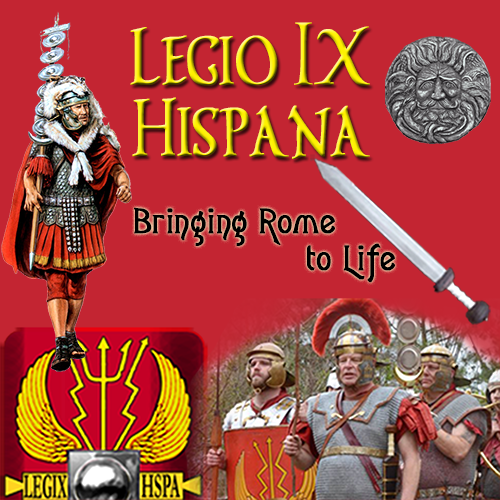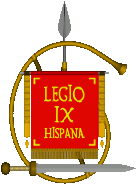Cingulum (military belt)
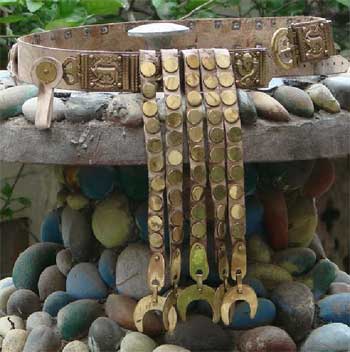 The Cingulum is the traditional Roman soldier's military belt.
The terms “cingulum” and the “balteus” are often confused and/or used inter-changeably… For us, we will use the term
“cingulum” for the soldier's military belt and the term “balteus” for things such as a sword baldric. The cingulum is
the traditional Roman soldier's military belt, whilst the balteus is an ordinary or common belt. The term
"balteus" refers to the baldric-style belt used to carry a gladius, pugio, loculus, etc.
The Cingulum is the traditional Roman soldier's military belt.
The terms “cingulum” and the “balteus” are often confused and/or used inter-changeably… For us, we will use the term
“cingulum” for the soldier's military belt and the term “balteus” for things such as a sword baldric. The cingulum is
the traditional Roman soldier's military belt, whilst the balteus is an ordinary or common belt. The term
"balteus" refers to the baldric-style belt used to carry a gladius, pugio, loculus, etc.
The Mark of a Soldier
The Cingulum is the mark of the soldier — not only that, it's really a status symbol of being a soldier. Worn at all times, even off duty, only soldiers were allowed, by law, to wear this unique belt. It may have had some defensive capabilities; it may represent rank or awards… it is more likely way for the soldier to show his status... we just don't know. The archaeological evidence suggests that some of these belts were plain and sparsely adorned, many however, were intricately elaborate. One theory is that since Roman soldiers did not have a lot to spend their pay on, (wine and women), they spent it on making their gear fancier — as a status thing. Is this the way it was? Who knows, but modern soldiers sure do this kind of thing — think about it…
Simple Cingulum
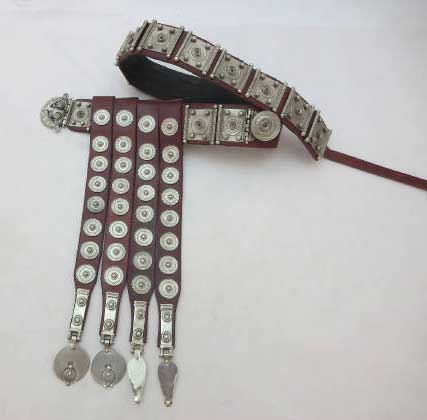
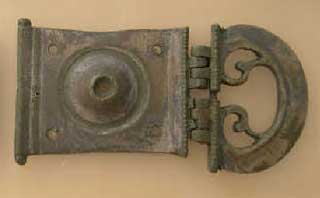 For our
purposes as common soldiers, a simple Cingulum is acceptable — preferred really. Reenactors tend to want to look
"salty"; like a veteran and to do so right out of the gate. Real soldiers do this too,
as witnessed by things like WW2 Afrikakorps soldiers bleaching their hats to look worn. The thing is, reenactors also
tend to buy and wear what they see other reenactors wearing and that isn't always right. In the case of the
cingulum, most of the belts you see for sale now are mass-manufactured in the sub-continent and for some reason (
cost, I guess) those companies have this need to cast everything, thus making the belts heavy — like a diver's weight belt. Ugh.
For our
purposes as common soldiers, a simple Cingulum is acceptable — preferred really. Reenactors tend to want to look
"salty"; like a veteran and to do so right out of the gate. Real soldiers do this too,
as witnessed by things like WW2 Afrikakorps soldiers bleaching their hats to look worn. The thing is, reenactors also
tend to buy and wear what they see other reenactors wearing and that isn't always right. In the case of the
cingulum, most of the belts you see for sale now are mass-manufactured in the sub-continent and for some reason (
cost, I guess) those companies have this need to cast everything, thus making the belts heavy — like a diver's weight belt. Ugh.
Cast or stamped
Most of the mid-1st century belts had stamped plates, not cast. Today, that can cost some $$ to get right, but there are ways to do it. Also, the soldier's belts would not all be the same — they were individualized. Many (most) of the belts we see on reenactors and for sale, look like they were purchased at a Tijuana flea-market... Original belts were actually well-made and were aquired more as a status symbol.
Fancy belts
If you just HAVE to buy a fancy belt, Kult of Athena has a couple of decent repros, the Reingonehim Cingulum like Marcvs wears and the Roman Tekije Cingulum with Tassets. (“Tassets”... don't be using that term or you will be peeling the unit's fava beans and getting your feet caned).
Better
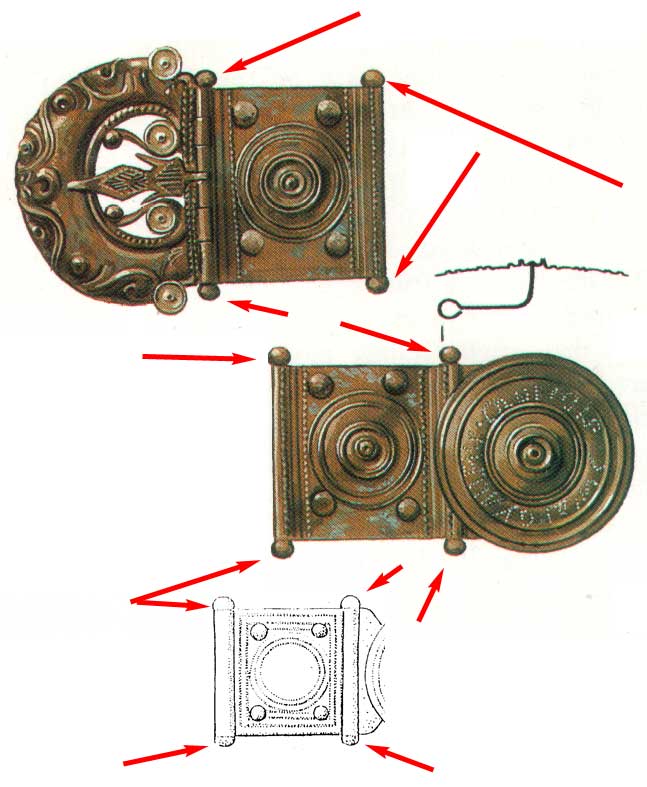 Better would be to make a simple leather belt, as issued, and take your time to make one that suits you. Clang Armory makes really nice stamped plates and parts. He also makes the “barbell” fittings that go on either end of each belt plate.
Better would be to make a simple leather belt, as issued, and take your time to make one that suits you. Clang Armory makes really nice stamped plates and parts. He also makes the “barbell” fittings that go on either end of each belt plate.
For really NICE and beautiful belt stuff, head over to Legio III Scythica's website and look. You will see how the belts should be. As with all things, you get what you pay for. Nice and accurate costs money. Only you can decide. Saying all this, again, I suggest that you build your kit slowly and with care. By no means are they the final word on this. When looking at LegioIII's site, you will see photos of the real deal and some very skillfully-made repros that will give you an idea what the cingulum should look like.
A Tradition
A tradition in Legio IX Hispana, is for the new miles to first make a simple Cingulum. It's quick, inexpensive and really, it's better to have a simple balteus when you first join, than none at all. A simple balteus has a basic "D" buckle and no ornamental plates or if it has plates, they are simple flat bronze or brass sheet, with 4-6 baltea.
As you acquire other gear and kit, you are encouraged to acquire a more ornamented cingulum… when that is complete, if you wish, you can then donate your simple cingulum into the unit's loaner kit or pass it along to a new recruit you are sponsoring.
Cingulum Nomenclature
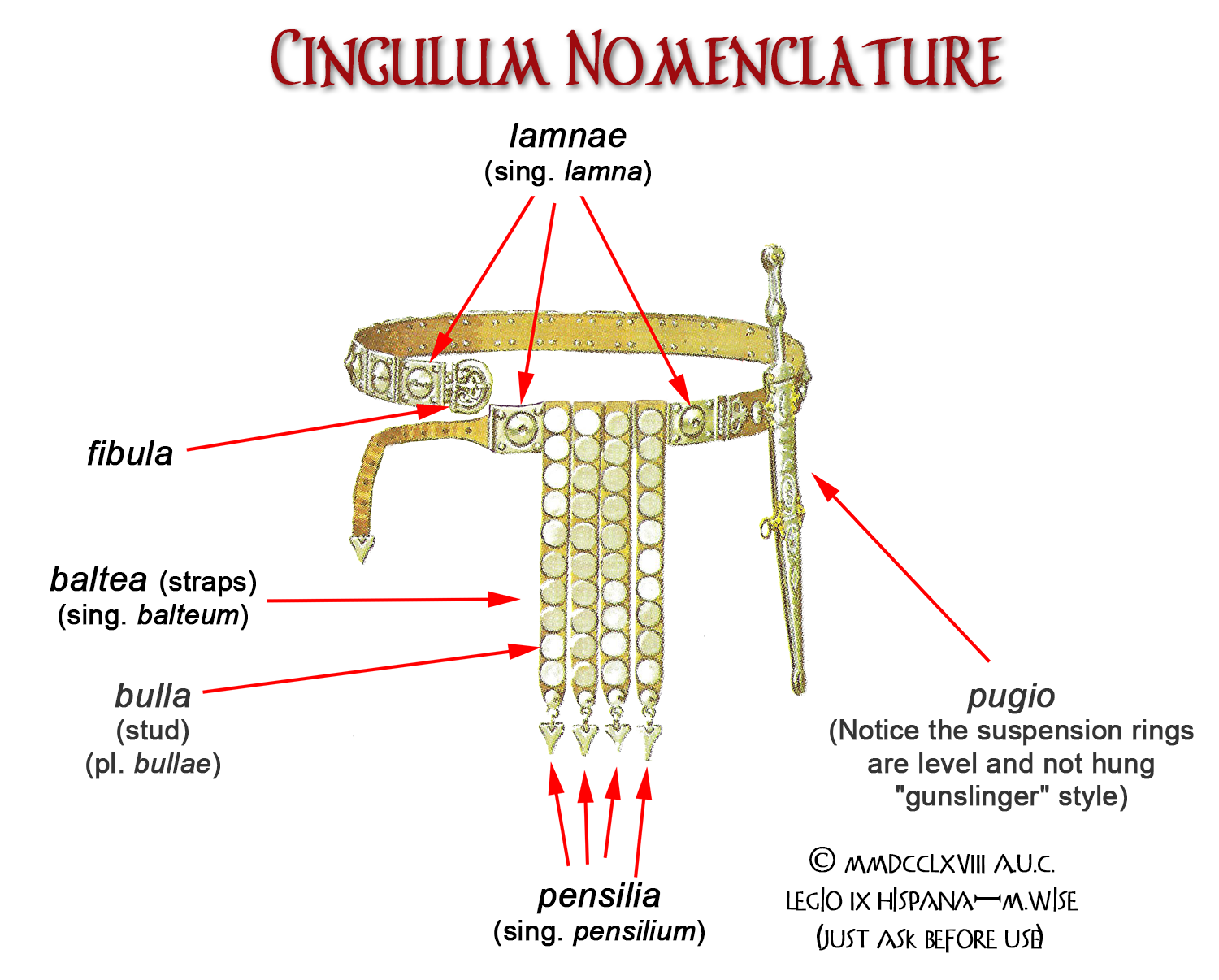
The Latin word for the hanging straps is baltea. A strap, including an apron strap, in Latin is: balteum (pl. baltea). This is the diminutive form of balteus, thus, a "little belt".
The pendant at the very end of the "apron" strap: pensilium (pl. pensilia). Pensilium is a substantiative neuter adjective, meaning "a pendent thing." It is attested as piece of military gear in Granius Licianus 26.1.1, describing a type of cavalry harness pendant used by equestrian nobles.
Below are 3 pages of belt plates from the Vindonissa catalog for reference for making your own authentic belt. The drawings have a cross-section, so that you can see how they are made, i.e. stamped vs. cast.
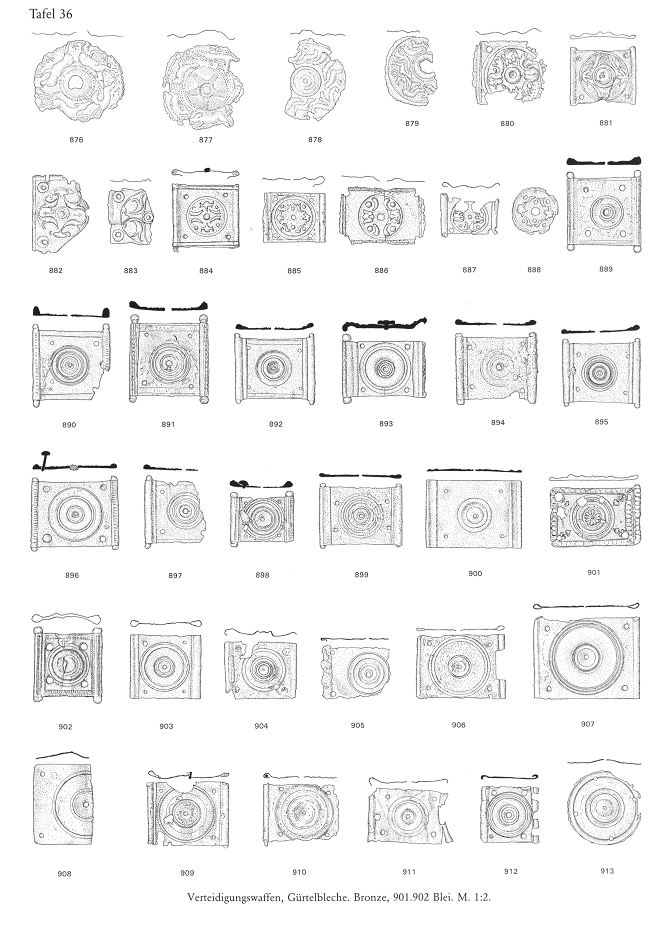
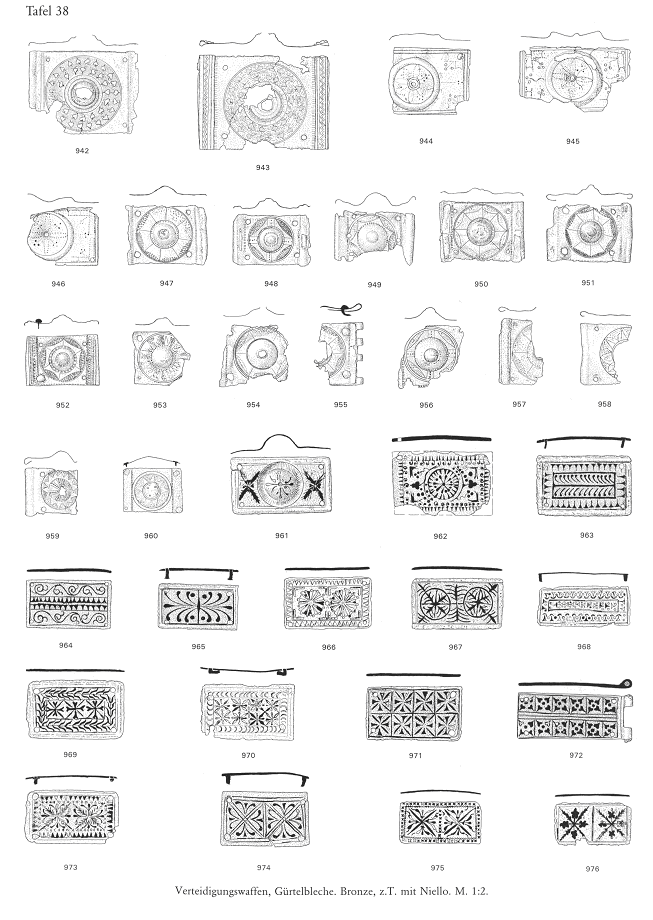
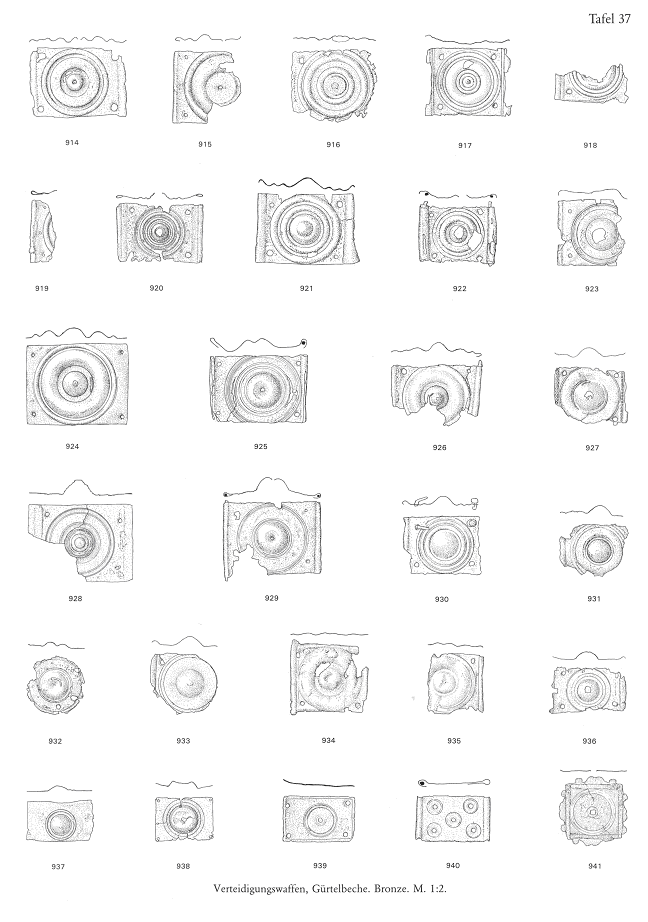
How the pugio should be attached
A detail from a book showing how the pugio should be attached. Notice the straps are horizontal, not dropping the pugio down like you're a gunfuighter at the OK Corral. Little things like this help.
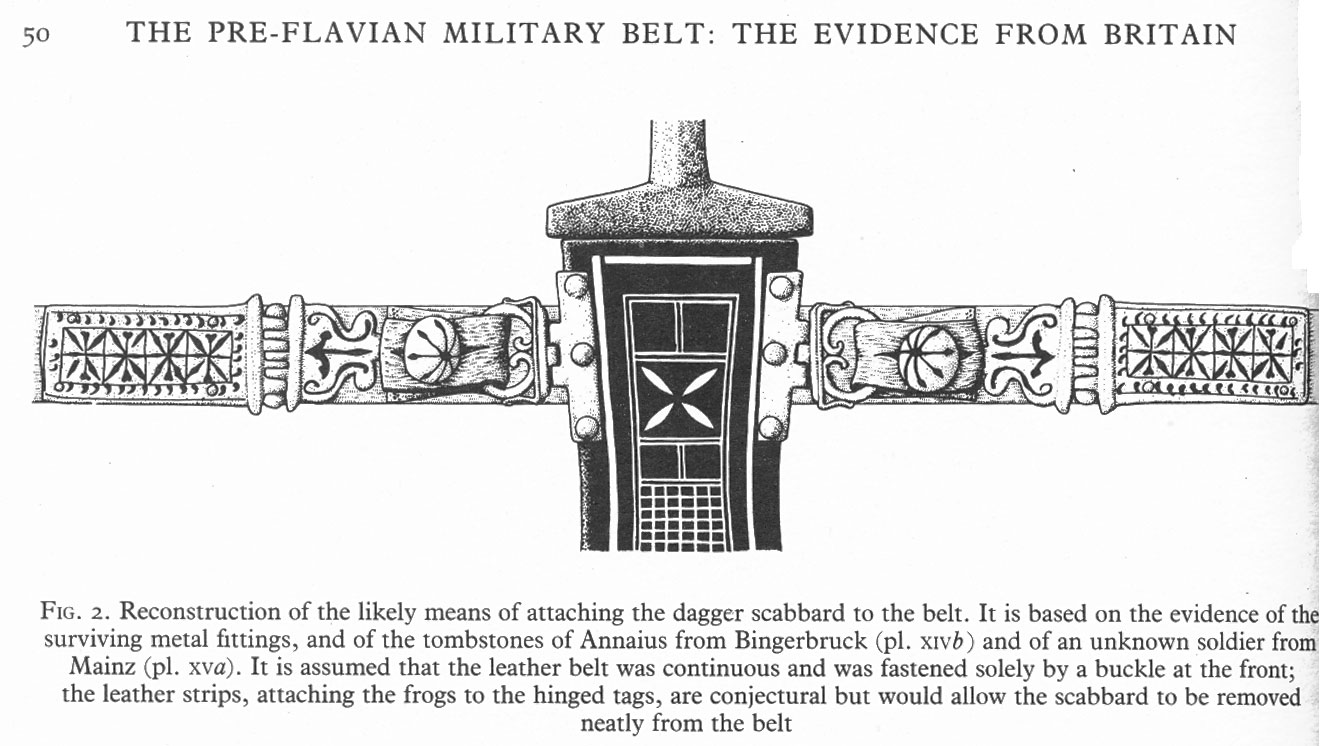
Things to Avoid
- Thick cast belt plates. A majority of the Roman belt plates discovered so far that date from the mid-1st century were made of sheet brass or silver. Some Roman belt plates were cast, but were generally much thinner than the older style reproductions still on the market.
- Apron studs were often stamped or made from sheet metal, but many were cast (again, generally thinner)
- Wrong buckles. Again, do a little reseach and just ask! We'll get you going in the right direction.

